by James Scott Bell
@jamesscottbell
 Kris had some great advice this week on becoming a smarter writer. I thought I’d weigh in (oops, wrong post-holiday idiom, but so it goes) with a few thoughts on how to get serious about making writing a career, be it full or part time.
Kris had some great advice this week on becoming a smarter writer. I thought I’d weigh in (oops, wrong post-holiday idiom, but so it goes) with a few thoughts on how to get serious about making writing a career, be it full or part time.
Because everybody wants to be a writer. Your ficus tree wants to be a writer. I’ve lost count of the times someone has uttered to me a variation on “I think I have a book inside me” and I choke back the urge to say, “That’s a great place to keep it.”
Then there are those who take a real step. They actually write a novel. Huzzah! I’m all for it, though most first novels are like first waffles. A good beginning, a great learning experience, but not yet ready to be served. Many writers drop out at this point, disappointed that their initial effort was not met with universal acclaim.
The serious writer makes a second attempt, and a third, and determines to keep on going. This writer wants to make a legit run at a) getting signed by an agent and gaining entry into the Forbidden City of traditional publishing; or b) going indie and creating a real income stream (for more on such choices, see this post).
If you have made the decision to be this kind of writer, let me give you ten pieces of advice forged over a quarter century of getting paid for my work.
- Make production your priority
I’ve long advised the following: Figure out how many words you can comfortably write in a week, considering your “real life” situation. Then up that number by 10% and divide that number into the writing days available to you. I write six days a week, and take one day off to recharge. If I have to miss a day, I don’t beat myself up. I simply try to make up the word count by doing a little extra on the other days.
And if I botch a week, or have something interrupt it—sickness, crisis, the running of the bulls in Pamplona—I forget it and start the next week afresh.
Now, I know there are some writers who find a quota onerous and claim it’s a hindrance to creativity. I don’t buy it. Creativity is a muscle that gets stronger when it works out. Try my method for six months and see for yourself.
If, after that time, you feel stifled by your quota, don’t give it up. Just reduce the number to something easy. Like 250 words. Your ficus tree can write 250 words in a day. Don’t be shown up by your ficus tree.
- Be intentional about learning your craft
A guy who wants to play golf doesn’t get better by going out with a bad grip, terrible stance, and an ugly swing, and chopping holes in perfectly fine grass. At some point he’s got to learn fundamentals and practice to embed them in his muscle memory.
Same for writers. You can keep writing and writing and chopping holes in your stories. You can repeat things that put readers off or don’t allow them to fully engage with what’s in your imagination.
Or you can determine to learn techniques that make your writing better.
Dedicate some time each week to studying the craft, and putting into practice what you learn. At least once, go to a good writers conference. Invest in a great course.
- Set up a system of quality feedback
When I was under contract with a publishing house, I was answerable to an editor. I was lucky to work with some good ones. One in particular would send his authors multi-page, single-spaced letters. When I got one of these in the mail I’d set it on my desk and pace around it for a couple of days before opening it, because I knew there was going to be a lot of work involved.
Which was good, because it made me a better writer.
Hiring a freelance developmental editor can be expensive, though if you connect with the right one it becomes a good investment rather than an expense.
An alternative is a trusted set of beta readers. Here are some tips from TKZ emeritus Joe Moore in that regard.
You might also benefit from a good critique group, with good as the operative word. Here are some tips from Jordan.
Every serious writer needs other sets of eyes on their work. Which reminds me: you do need to pay a good proofreader if you’re publishing on your own. Nothing screams amateur to a reader like a stream of typos.
- Set aside time for pure creativity
As I mentioned above, creativity is a muscle that gets stronger with use. I try to take an hour a week just to do wild, creative exercises.
Two of my favorites:
The What If? Game — Write down as many one line premises as you can. Base it on what you observe around you. What if that woman sipping a latte by the window is a serial killer? What if my phone is actually an alien taking notes on everything I do and say?
The First-Line Game — Just make up first lines, not knowing how any of them will turn out! I once wrote: It’s not every day you bleed to death. I came back to it and the plot for Framed started to come to me. I have a ton of these in a file. Do the same and you’ll never run out of story sparkers.
- Detox from social media
Everybody knows that social media addiction is real. Hopping onto Twitter or Facebook or Instagram gives your brain an instant dopamine hit. It’s like digital crack. And it’s really doing damage our ability to concentrate and focus.
I find this “drug” calling to me whenever I’m struggling with a scene. Rather than stick it out, I’m tempted to do a little traipsing through Twitter. It’s a cop out, and I have to tell myself—sometimes out loud—to keep writing. Deciding how much time to spend on social media and creating an actual schedule for it (as opposed to haphazard hopping) is a very wise thing to do.
And when you do engage socially, follow Clare’s sage advice by sticking to positive and kind give-and-take.
- Be thinking two projects ahead
One of the worst things you can do is work, re-work, and keep re-working a book without getting ready to write the next … and the next. I’ve been to writers conferences several years in a row where I’ve seen conferees returning with the exact same manuscript.
Think like a movie studio. You have a project that is in production, one that is “green lit” as your next, and at least one “in development.” Spend part of your creativity time jotting ideas and scenes for these works to come.
- Write when you’re not writing
Keep training your mind to be observant and curious when you’re away from the keyboard. Carry a notebook, or use your phone, to record things that occur to you. If you overhear some intriguing dialogue in a coffee house or other venue, write it down.
The benefit of this practice is that the “boys in the basement” will work for you, even as you sleep. I’m slogging through a first draft right now, and over the last few weeks I’ve awakened several times with an insight that’s helped me, or a reminder about something I’d written a month ago that needs revisiting. Love those boys. I send them extra donuts.
- Read widely
Of course you should read authors you admire and can learn from. Copy passages that move you (the best way is by using a pen and paper, to really capture the rhythm). You’re not doing this to use the words in your own work—that’s called plagiarism. You’re doing this to stretch your writing muscles and expand your style.
When I read a page or paragraph I love, I sticky note it, or highlight it on my Kindle. I go back to these and read them out loud from time to time.
Don’t neglect non-fiction. Learn more about the world, dig into areas you might use someday in your fiction. Become the kind of autodidact who is welcome at social gatherings.
- Nurture your motivation
All writers face moments when they think, Sheesh, should I still be doing this? Why keep beating my head against the door of the Forbidden City? Why self-publish books that languish in the Amazon basement?
The answer, of course, is that you’re a writer. There’s something in you that wants—needs—to put words on paper (or screen) and transfer a story you feel deeply to readers, so they will feel it, too.
That’s your motivation, and you should nurture it regularly, not just when you want to drown your sorrows.
Make a shelf of your ultra-favorite novels and novelists. I’ve found that reading some pages from a book that has moved me gets my writing juices flowing again.
Collect some quotations for reflection. Here are two of my favorites:
“If you boldly risk writing a novel that might be acclaimed as great, and fail, you could succeed in writing a book that is splendid.” – Leonard Bishop, Dare to be a Great Writer
“For me, that is the secret to a successful, prolific career as a writer: Have fun, entertain yourself with your work, make yourself laugh and cry with your own stories, make yourself shiver in suspense along with your characters. If you can do that, then you’ll most likely find a large audience; but even if a large audience is never found, you’ll have a happy life.” — Dean Koontz, Strange Highways
- Be businesslike
This could also be #1 for the serious writer. In a way, everything else in this post can be viewed as “best practices for writers” advice. If you do such things regularly, you are systematizing, which is what good businesses do.
A good businessperson also looks at the world through clear (not rose-colored) lenses.
Clear lenses recognize that a publisher is not your friend or your mama; it is a money-making enterprise. Make them money and they will keep you around. Cost them money and they won’t. So you’d better understand publishing contracts, the concept of leverage, and what you are prepared to give up in order to have a shot at traditional success.
For indies, clear lenses see that this is not a get-rich-quick pathway. It’s going to take years of production and quality control to build a readership. You’ll need to make informed judgments about things like “going wide” or being exclusive with Amazon; about producing audio versions; about where to concentrate your marketing; and much more.
This is a lot to take in, I know, but then again getting serious about anything takes time and effort. Your brain surgeon doesn’t say, “I think I have a brain surgery inside me!”
So don’t ask if you have a book inside you. Ask if you have a writer inside you. Then get to work.
So where are you on your writing journey?
 Today as we celebrate the MLK holiday, I find that many of the issues Martin Luther King Jr. espoused seem to resonate even more deeply than they have in the past. Maybe it’s because over the past year or so I have become more involved in state politics providing both volunteer and aide support to one of the few African American senators in Colorado. Maybe it’s because in trying (and often failing) to juggle these commitments and my writing I’ve had to reevaulate my writing ‘dreams’. Or maybe it’s because I celebrated a ‘big’ birthday last year which inevitably meant taking stock of what I’ve achieved so far…whatever the reason, I find myself feeling more philosophical than usual today.
Today as we celebrate the MLK holiday, I find that many of the issues Martin Luther King Jr. espoused seem to resonate even more deeply than they have in the past. Maybe it’s because over the past year or so I have become more involved in state politics providing both volunteer and aide support to one of the few African American senators in Colorado. Maybe it’s because in trying (and often failing) to juggle these commitments and my writing I’ve had to reevaulate my writing ‘dreams’. Or maybe it’s because I celebrated a ‘big’ birthday last year which inevitably meant taking stock of what I’ve achieved so far…whatever the reason, I find myself feeling more philosophical than usual today.




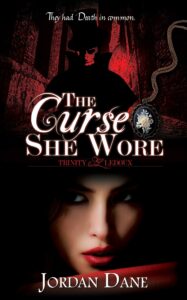
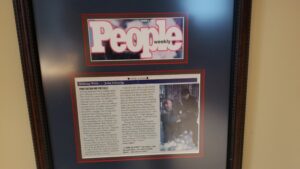
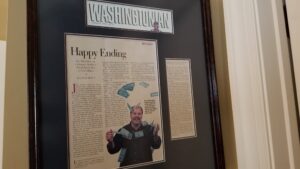
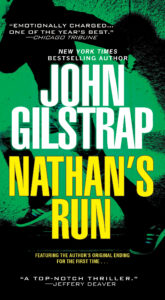
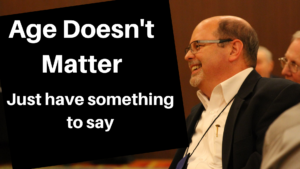
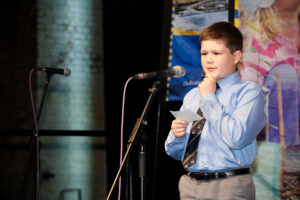


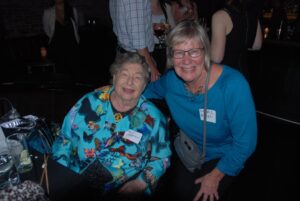
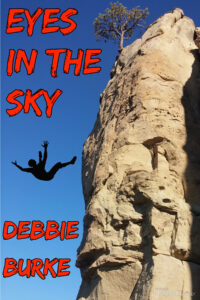
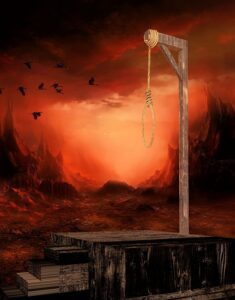 If a prisoner survives multiple trips to the gallows, should he be set free?
If a prisoner survives multiple trips to the gallows, should he be set free?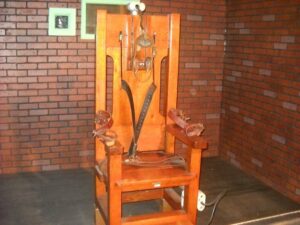 A little digging led me to an English criminal named Joseph Samuels. In 1801, a jury convicted Samuels of robbery at the tender age of 15 years old and shipped him to Australia, to serve his time at a penal colony in Sydney Cove.
A little digging led me to an English criminal named Joseph Samuels. In 1801, a jury convicted Samuels of robbery at the tender age of 15 years old and shipped him to Australia, to serve his time at a penal colony in Sydney Cove.


